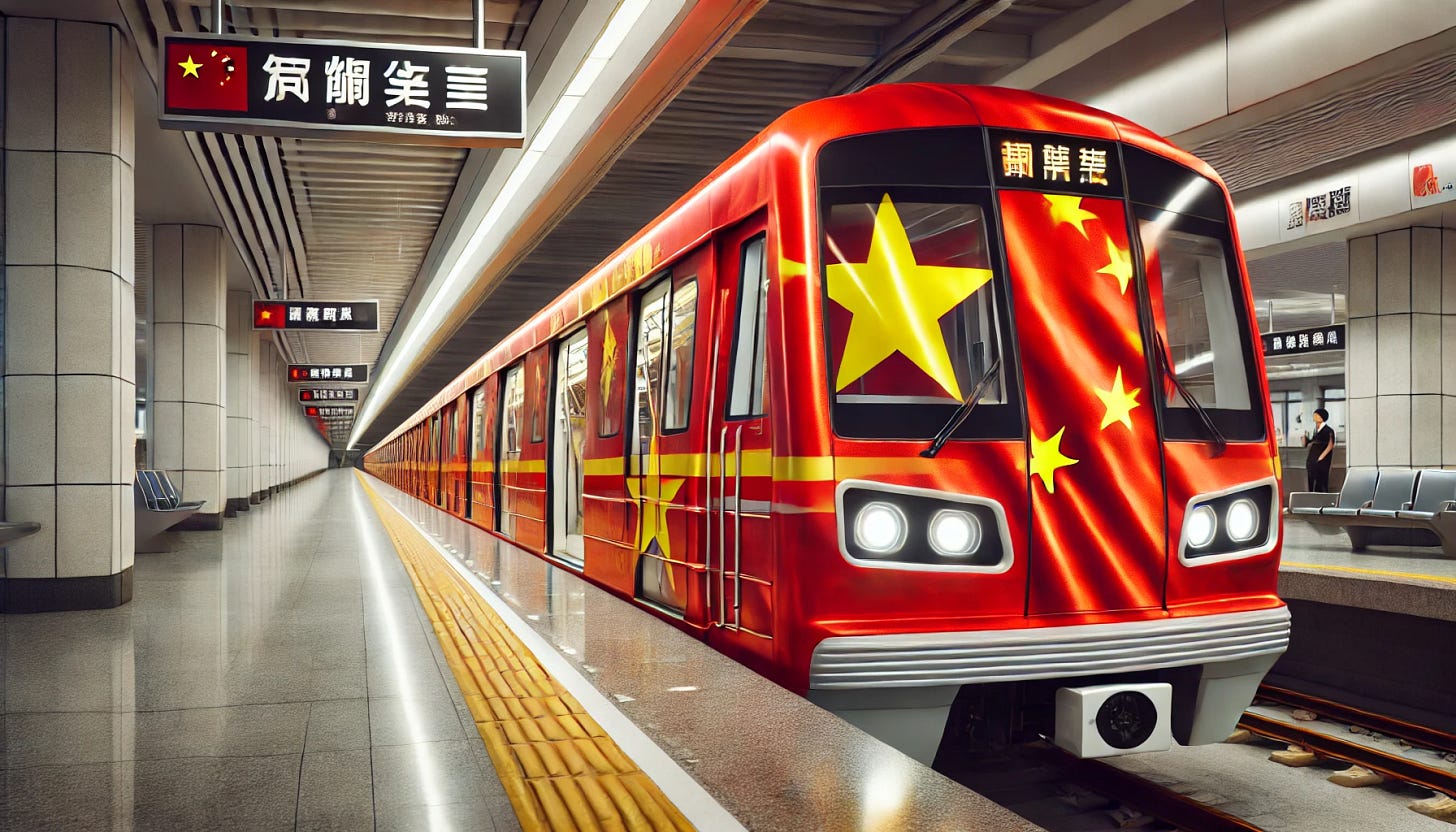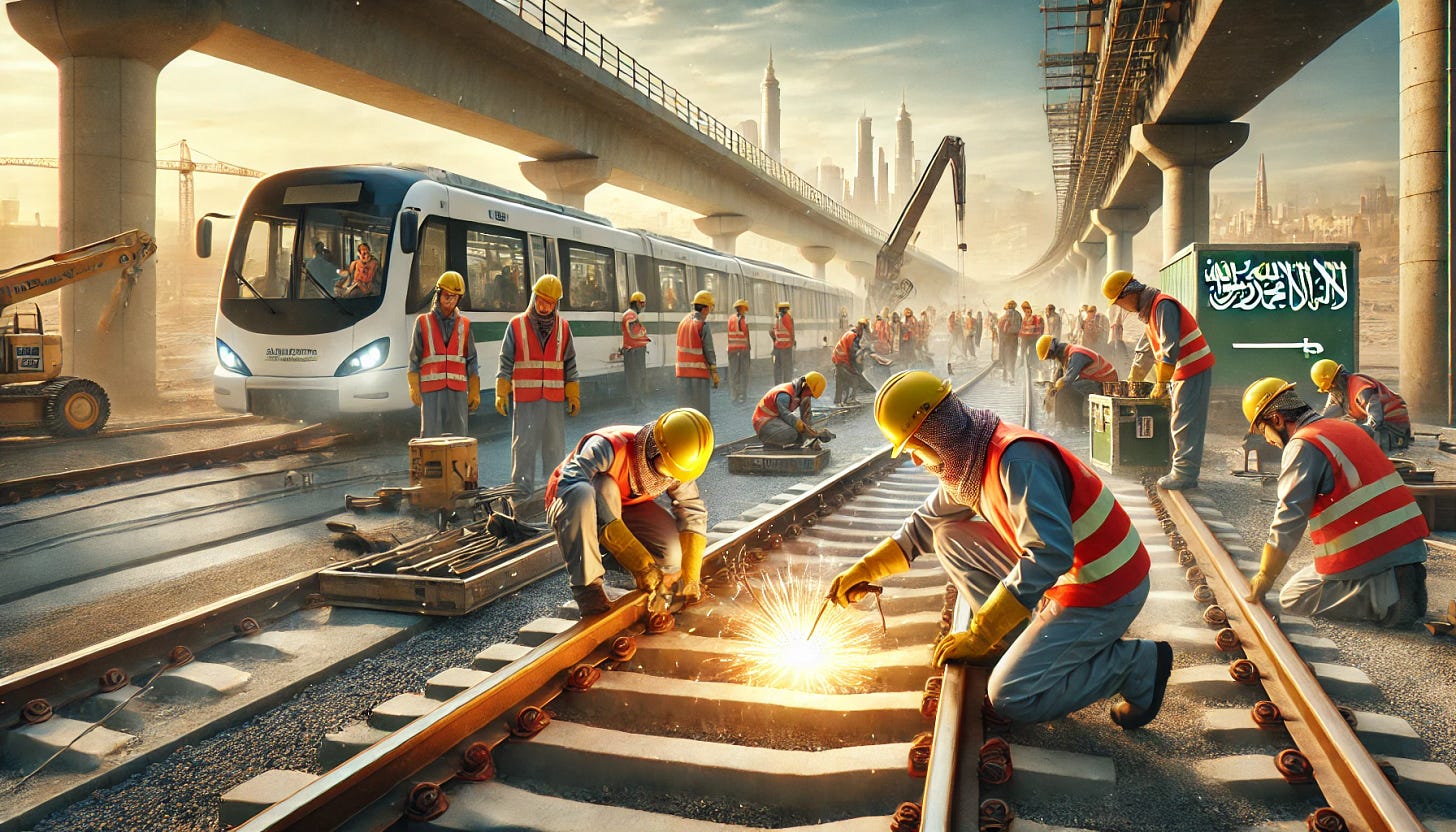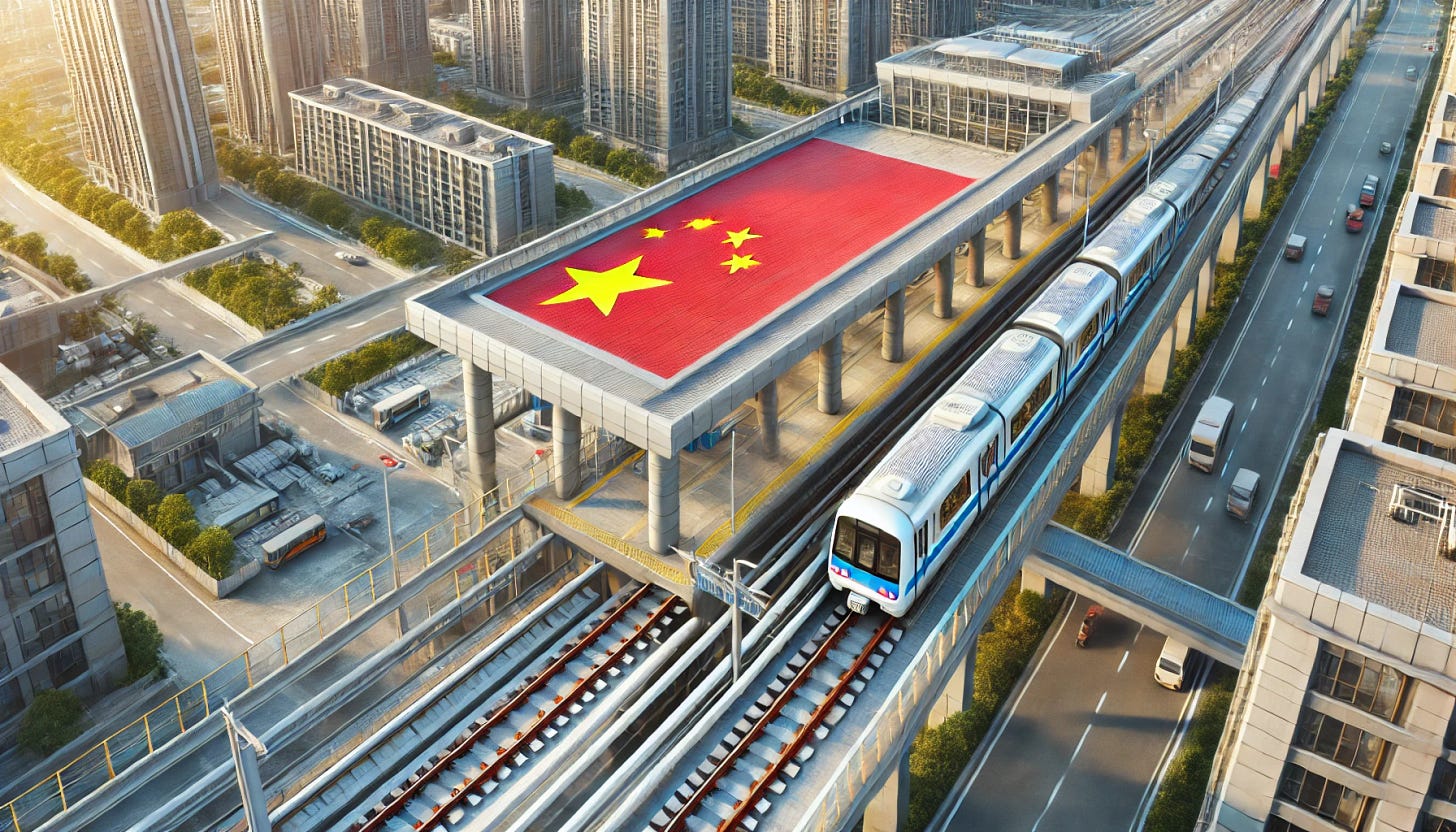Envision a sprawling underground network so vast that it crisscrosses over 50 cities and spans 10k kilometers – A distance greater than that between New York City and London!
In just a few decades, China transformed its urban transit through a metro rail revolution, which today serves as a backbone for urban mobility in over 50 cities across the country.
This is the awe-inspiring reality of China's metro rail system, a marvel of modern engineering and a testament to the nation's unwavering commitment to rapid urbanization and infrastructure development.
And, today, I embark on a captivating journey through time, tracing the evolution of China's metro rail from its nascent beginnings to its current global dominance.
A Humble Start: The Genesis of a Transportation Revolution
The seeds of China's metro rail revolution were sown in the 1960s amidst the backdrop of the Cold War.
The Beijing Subway, initially designed as a subterranean sanctuary during potential conflicts, marked the inception of underground transit in the country.
However, it wasn't until the economic reforms of the 1980s and the subsequent surge in urbanization that the metro rail system truly took off. As China's cities swelled with people, the need for efficient and sustainable transportation solutions became increasingly apparent.
The government, recognizing the importance of infrastructure development, embarked on an ambitious plan to build a nationwide metro rail network.
This marked a pivotal turning point in China's transportation history.
The Early Commute: Beginnings in the 1990s
China's metro story began accelerating in earnest in 1990 with the opening of the Shanghai Metro, which was the third metro system in Mainland China following Beijing and Tianjin.
The initial network was modest but set the stage for rapid expansion as the country's economic boom increased urban populations and demanded more efficient urban transport solutions.
Rapid Transit Expansion: 2000s to 2010s
The early 2000s marked a significant shift with the Chinese government prioritizing infrastructure to sustain urban growth and improve public services.
The Government no more saw infrastructure build-up as a necessity to support the growing urbanisation. It rather began to see infra-build-up as the precursor to accelerate urbanisation.
And thus followed an unprecedented building spree which benefited all, from metro rail construction to apartments, highways, shopping malls, industrial parks and more.
Then came the 2008 Beijing Olympics, which provided a global stage for China to showcase its engineering prowess, with the newly constructed Olympic Line captivating the world's attention.
Overall, Beijing had expanded its metro to become one of the largest in the world, taking over the South Korean capital city of Seoul.
The subsequent years saw exponential growth, with cities like Guangzhou, Shenzhen, and Chengdu developing extensive networks. And, that way by 2010, China had added hundreds of kilometers to its metro rail infrastructure, surpassing many Western counterparts.
2023: The Age of Hyper-Growth
Today, China's metro network has grown into an intricate web of connectivity, linking major cities and facilitating the seamless movement of people.
And, this has become the backbone of urban transportation in China, reducing traffic congestion, curbing pollution, and improving the quality of life for millions of commuters.
Enthused by the public love for the same, in 2023 alone, over 500 kilometers of new lines were added to the network, a testament to the relentless pace of development.
This is almost nine times the capacity that India added in 2023! In fact, this is 25% more than what Delhi Metro has taken the last 25 years to build.
Insane!
But, Who’s Building This?
The success of China's metro rail revolution can be attributed to a collaborative effort involving various stakeholders.
The National Development and Reform Commission (NDRC), as the central planning agency, plays a pivotal role in formulating policies and allocating resources for metro rail development.
State-owned enterprises like the China Railway Construction Corporation (CRCC) and the China Railway Rolling Stock Corporation (CRRC) are the backbone of the industry.
CRCC's expertise in construction and engineering has been instrumental in building numerous metro lines across China and abroad, while CRRC's advanced train manufacturing capabilities have made it a global leader in rolling stock production. The latter has also supplied rolling stock for a host of metro rail systems in India, including for Bengaluru Metro.
Meanwhile, local governments and transit authorities play a crucial role in the daily operation and management of metro systems.
Impact and Influence on the Global Stage
The impact of China's metro rail revolution extends far beyond its borders, setting benchmarks globally.
For comparison, the New York City Subway, one of the oldest and largest systems in the US, extends just over 380 kilometers, a fraction of Shanghai’s metro alone.
Meanwhile, India’s rapidly growing metro network, like Delhi’s, aims for a scale that matches China’s, though it currently spans approximately 390 kilometers across the city.
And, Chinese companies, armed with expertise and technology, are now exporting their know-how to countries worldwide. From Addis Ababa to Kuala Lumpur, Chinese-built metro systems are transforming urban transportation landscapes across continents.
This global expansion is part of China's broader Belt and Road Initiative (BRI), a strategic endeavour aimed at enhancing connectivity and cooperation between China and the rest of the world.
And, metro rail projects are a key component of the BRI, with China providing financial and technical assistance to partner countries. This not only strengthens China's global influence but also contributes to the development of sustainable transportation infrastructure worldwide.
But Still, Where?
Operational projects: Saudi Arabia’s Mecca Metro, Ethiopia’s Addis Ababa Light Rail, Iran’s Tehran Metro Line 6 and Israel’s Tel Aviv Light Rail
Under-construction projects: Nigeria’s Lagos Rail Mass Transit, Russia’s Moscow-Kazan metro rail and Kenya’s Mombasa-Nairobi
Planned/Proposed projects: Vietnam’s Hanoi metro, Serbia’s Belgarde metro and Thailand’s Chiang Mai Monorail
Back to China!
The metro rail revolution in China has dramatically transformed urban economies, reducing traffic congestion, lowering pollution, and enhancing the quality of life.
Economically, it has created thousands of jobs and spurred growth in ancillary industries such as construction, engineering, and technology.
But, the industry also faces several challenges with respect to the breakneck pace of expansion which has raised concerns about debt sustainability and potential overcapacity in many of the cities, particularly in sparsely populated areas.
However, the future remains promising.
The continued urbanization trend, coupled with increasing environmental awareness, presents a strong impetus for further development.
Furthermore, the growing global demand for metro rail expertise and technology presents lucrative opportunities for Chinese companies to expand their international footprint.
Also, recent policies have focused on integrating metro systems with renewable energy sources and enhancing connectivity between different modes of public transport to address these issues.
Recent Developments and Future Tracks
As we conclude this journey through China's metro rails, it's clear the nation's commitment to urban transit has not only reshaped its own cities but also inspired global innovations in public transport.
It's a story of how a country can transform its transportation landscape in a relatively short span of time, setting a benchmark for other nations to emulate.
Stay tuned for our next "Decoding The Dragon" issue, where we'll uncover another monumental facet of China's rapid modernization.
Best,
Jayant Mundhra








Very nice sir, I checked out Bharat nama , which is really great and hope you make more videos soon and of key sector.